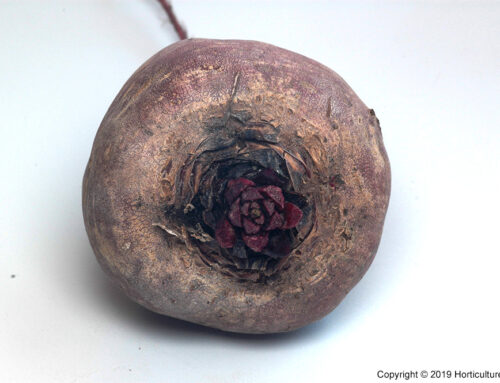
Irrigation of beetroot
It has already been mentioned in previous articles that the soil must be kept moist until the seedlings emerge. Light regular water applications must be applied from sowing until the seedlings emerge. heavy irrigation will make herbicides less effective. Beetroots grown during alternating dry and wet periods have poor quality and poor emergence. The beets are malformed and have many small hairs or side roots on the bulbs. Soils that drain well and are irrigated regularly provide much higher yields and have less diseases and physiological disorders.
Beetroot have shallow roots. They usually stay in the top 300mm layer of soil. Growers must take care that this layer does not dry out. From planting stage irrigation must be calculated so that the whole 300mm depth is wet. The interval between irrigation cycles will vary according to the soil type and climate. Water consumption will be faster during warm days and cycles made shorter to ensure good water supply to the plants. During colder months the intervals are longer.
Beetroot requires 4 mm of rain water per day during average summer day but 2mm during a winter’s day. On very hot summer days 8mm may be required. Most growers apply 20-30mm of water per irrigation cycle. The best is to consult an irrigation specialist to calculate the water retention capacity of the soil. In that way precise irrigation cycles can be calculated.
If you have sandy soils, you will have short irrigation cycles. If you have heavy clay soils you will have long irrigation cycles but be careful not applying too much water at one time. This will cause erosion.





